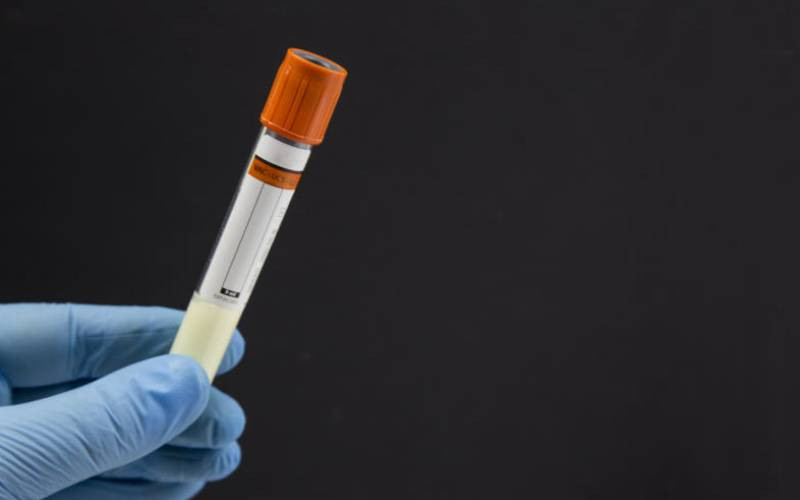
1. A LUNG
Typically, we have a pair of lungs located in the chest region.
Why it would be removed
1. Due to cancer and it is usually done to get rid of cancerous tumours.
Edward Njiru, an architect, had his lung removed in 2008 while a form three student due to a tumour. “The only way it has affected me is that I can’t do strenuous exercise but I can pretty much do most things,” he says. Pope Francis also had part of his lung removed due to an infection when he was younger and has led a normal life.
2. Aggressive tuberculosis: Some people have also had one of their lungs removed due to aggressive bacterial infections such as tuberculosis.
The removal of a lung is referred to as pneumonectomy.
How does one function without a lung?
The remaining lung compensates for the absence of the other one. It inflates and takes up the space left by the previous lung, and respiratory function is restored up to about 70 per cent. There isn’t too much impact on the quality of life. The affected person only has to do less strenuous work than a person with two fully functional lungs.
2. STOMACH
The stomach acts as a temporary storage for food, secretes acids to digest it and contracts and expands to churn the food.
Why it would be removed
1. Severe inflammation and growths in the stomach
2. Stomach cancer. Hans Rueffert, an American chef, had to have his stomach removed after a bout of stomach cancer. However, it had spread to his esophagus and therefore part of his esophagus was also removed.
3. Severe ulcers. Removal of the stomach is referred to as a total gastrectomy. Some people also get part of their stomach removed, referred to as a sleeve gastrectomy, in order to lose weight.
How does one function without it?
When the stomach is removed, the oesophagus (the tube that connects the throat to the stomach) is connected directly to the duodenum (the first section of the small intestines), in a procedure referred to as a Roux-en-Y reconstruction. One can usually return to eating normally, just in slightly smaller portions, and after a while, the body adjusts and the duodenum begins to act like a stomach, storing food for a while before passing it on. Some people may have to take vitamin supplements if the body has trouble absorbing the vitamins.
3. KIDNEY
They are bean-shaped, and are the size of a fist. They are located on the sides of the spine, near the back of the upper abdomen. They filter blood, removing waste and toxins from the body, produce urine, and keep the levels of minerals in the body balanced.
Why it would be removed
1. To get rid of a tumour
2. As a result of an injury
3. After a donation.
One can also be born with one kidney, a condition known as renal agenesis. Removal of the kidney is known as nephrectomy. Angela Murigi, 26, was born with one kidney and was not even aware of it until adulthood, when it was discovered during a routine medical exam. “It hasn’t had any effect on my life, although just as a caution, I avoid junk food,” she says.
How does one function without it?
People with one kidney usually live completely normal and healthy lives, as the remaining kidney is completely capable. Tests have shown that the kidney can also increase in size to perform optimally. People with one kidney just have to be more careful not to damage the one kidney that they have.
4. GALL BLADDER
This is located under the liver, on the right side of the abdomen. The gallbladder stores and concentrates bile, which is produced by the liver before releasing it into the small intestine. Bile is used for breaking down fats.
Why it would be removed
1. Sometimes bile becomes too thick and can cause blockage along the tubes.
2. It can also be removed due to gallstones, which occur when bile solidifies.
3. Due to inflammation.
Lyndon B Johnson, the 36th American president, had his gallbladder removed in 1965. He famously lifted his shirt and showed his scar from the surgery to the press, to allay fears that he was seriously sick.
Removal of the gallbladder is known as cholecystectomy.
How does one function without it?
One can lead a completely normal life without the gal bladder. The only difference is that the bile is no longer stored and concentrated, and just slowly gets into the small intestines. Fat may not be digested as efficiently, so an affected person can choose to eat less fatty foods, to avoid a fatty liver.
What is on your Christmas wishlist this year? The Standard Group Plc is a multi-media organization with investments in media
platforms spanning newspaper print
operations, television, radio broadcasting, digital and online services. The
Standard Group is recognized as a
leading multi-media house in Kenya with a key influence in matters of national
and international interest.
The Standard Group Plc is a multi-media organization with investments in media
platforms spanning newspaper print
operations, television, radio broadcasting, digital and online services. The
Standard Group is recognized as a
leading multi-media house in Kenya with a key influence in matters of national
and international interest.










